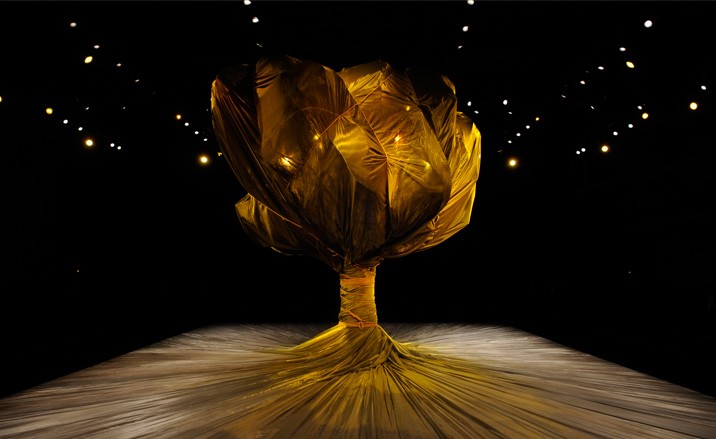“While the poet of Thrace, with songs like these, drew to himself the trees, the souls of wild beasts, and the stones that followed him, see, how the frenzied Ciconian women, their breasts covered with animal skins, spy Orpheus from a hilltop, as he matches songs to the sounding strings. One of them, her hair scattered to the light breeze, called: ‘Behold, behold, this is the one who scorns us!’ and hurled her spear at the face of Apollo’s poet, as he was singing. Tipped with leaves, it marked him, without wounding. The next missile was a stone, that, thrown through the air, was itself overpowered by the harmony of voice and lyre, and fell at his feet, as though it were begging forgiveness for its mad audacity. But in fact the mindless attack mounted, without restraint, and mad fury ruled. All their missiles would have been frustrated by his song, but the huge clamour of the Berecyntian flutes of broken horn, the drums, and the breast-beating and howls of the Bacchantes, drowned the sound of the lyre. Then, finally, the stones grew red, with the blood of the poet, to whom they were deaf.
First, the innumerable birds, the snakes, and the procession of wild animals, still entranced by the voice of the singer, a mark of Orpheus’s triumph, were torn apart by the Maenads. Then they set their bloody hands on Orpheus, and gathered, like birds that spy the owl, the bird of night, wandering in the daylight, or as in the amphitheater, on the morning of the staged events, on either side, a doomed stag, in the arena, is prey to the hounds. They rushed at the poet, and hurled their green-leaved thyrsi, made for a different use. Some threw clods of earth, some branches torn from the trees, and others flints. And so that their madness did not lack true weapons, by chance, oxen were turning the soil under the ploughshare, and, not far away from them, brawny farm workers were digging the solid earth, sweating hard to prepare it for use, who fled when they saw the throng, leaving their work tools behind. Hoes, heavy mattocks, and long rakes lay scattered through the empty fields. After catching these up, and ripping apart the oxen, that threatened them with their horns, the fierce women rushed back to kill the poet. As he stretched out his hands, speaking ineffectually for the first time ever, not affecting them in any way with his voice, the impious ones murdered him: and the spirit, breathed out through that mouth to which stones listened, and which was understood by the senses of wild creatures – O, God! – vanished down the wind.
The birds, lamenting, cried for you, Orpheus; the crowd of wild creatures; the hard flints; the trees that often gathered to your song, shedding their leaves, mourned you with bared crowns. They say the rivers, also, were swollen with their own tears, and the naiads and dryads, with dishevelled hair, put on sombre clothes. The poet’s limbs were strewn in different places: the head and the lyre you, Hebrus, received, and (a miracle!) floating in midstream, the lyre lamented mournfully; mournfully the lifeless tongue murmured; mournfully the banks echoed in reply. And now, carried onward to the sea, they left their native river-mouth and reached the shores of Lesbos, at Methymna. Here, as the head lay exposed on the alien sand, its moist hair dripping brine, a fierce snake attacked it. But at last Phoebus came, and prevented it, as it was about to bite, and turned the serpent’s gaping jaws to stone, and froze the mouth, wide open, as it was.
The ghost of Orpheus sank under the earth, and recognised all those places it had seen before; and, searching the fields of the Blessed, he found his wife again and held her eagerly in his arms. There they walk together side by side; now she goes in front, and he follows her; now he leads, and looks back as he can do, in safety now, at his Eurydice.”
Ovid
The Metamorphoses
Book XI: 1-66
 Nymphs Listening to the Songs of Orpheus, Charles Jalabert, 1853
Nymphs Listening to the Songs of Orpheus, Charles Jalabert, 1853
 Thracian Girl Carrying the Head of Orpheus on His Lyre, Gustave Moreau, 1865
Thracian Girl Carrying the Head of Orpheus on His Lyre, Gustave Moreau, 1865
 Nymphs Finding the Head of Orpheus, John William Waterhouse, 1905
Nymphs Finding the Head of Orpheus, John William Waterhouse, 1905







